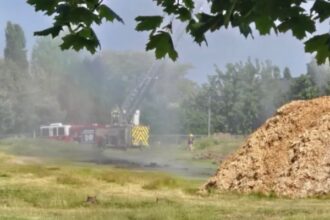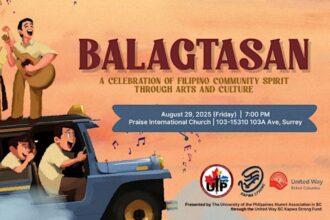In the heart of Burlington this past weekend, something remarkable unfolded—a vibrant collision of ideas, aspirations, and creative energy that may very well reshape the cultural landscape of this lakeside city for years to come. The Burlington Culture Jam Workshop wasn’t just another community meeting with stale coffee and predictable talking points; it was a living laboratory where residents became architects of their shared cultural future.
As someone who’s witnessed countless community engagement initiatives across North America, I can attest that what’s happening in Burlington represents a fascinating shift in how municipalities approach cultural development. Rather than imposing top-down visions, Burlington officials have created a genuine dialogue with their citizens, acknowledging that authentic cultural identity emerges from the lived experiences of people who call a place home.
“Culture isn’t something you can manufacture or import,” explained Suzanne Haines, Executive Director of the Burlington Cultural Board, as participants filtered into the workshop space. “It has to be cultivated from within, nurtured by the community itself.” This philosophy underpinned every aspect of the jam session, where over 120 residents from diverse backgrounds contributed their perspectives on what makes Burlington culturally distinct—and what it could become.
The workshop utilized innovative engagement techniques that broke down traditional barriers between “experts” and citizens. In one corner, teenagers collaborated with seniors on mapping cultural assets hidden throughout neighborhoods. Nearby, new immigrants shared stories of cultural practices they hoped to preserve and integrate into Burlington’s identity. Local artists, business owners, and educators found themselves in productive conversations that would have been unlikely in their day-to-day lives.
What makes this initiative particularly notable is its timing. Many mid-sized Canadian cities are experiencing a cultural identity crisis, caught between the gravitational pull of nearby metropolises and the desire to nurture something authentically local. Burlington, situated in the shadow of Toronto’s cultural juggernaut, faces unique challenges in defining itself beyond being a bedroom community.
Data from similar cultural planning exercises across Canada suggests that these participatory approaches yield tangible results. Cities like Kelowna and Halifax have seen increases in cultural participation, stronger community bonds, and even economic benefits following community-driven cultural planning. The question is whether Burlington can translate this initial enthusiasm into sustained momentum.
The workshop wasn’t without tensions that reflect broader societal debates. Some participants advocated for preserving Burlington’s historical character, while others pushed for bold reinvention. Discussions about allocating resources revealed competing priorities between established cultural institutions and grassroots initiatives. These creative tensions, however, weren’t suppressed but channeled into productive dialogue—a refreshing approach in our increasingly polarized public discourse.
What struck me most was how the workshop dismantled the artificial separation between “high culture” and everyday life. Participants recognized that culture manifests not just in galleries and theaters but in community gardens, neighborhood festivals, culinary traditions, and even the design of public spaces. This holistic understanding represents a maturation in how we conceptualize cultural development in Canada.
The true test will come in the implementation phase. Will the ideas generated transform into concrete policies and initiatives? Will the diverse voices heard during the workshop remain engaged in the long-term cultural evolution of Burlington? The city has committed to incorporating findings into its Cultural Action Plan, but the path from inspiration to implementation is rarely straightforward.
As cities across Canada grapple with questions of identity, belonging, and shared values, Burlington’s experiment offers valuable lessons about the potential of genuine community engagement. In an age where many feel disconnected from decision-making processes that shape their communities, this approach represents a meaningful alternative.
Perhaps the most powerful outcome isn’t any specific cultural initiative that might emerge, but rather the strengthened social fabric that results when people collectively imagine their shared future. In that sense, the Culture Jam Workshop has already succeeded, regardless of what happens next.
As one participant reflected while departing: “I’ve lived in Burlington for twenty years, but today I feel like I’m helping to create the Burlington of tomorrow.” In that simple statement lies the profound potential of community-driven cultural development—not just for this lakeside city, but for communities everywhere seeking to write their own cultural narratives.
For more exploration of community-driven initiatives, visit our CO24 Culture section, or read about emerging social patterns in CO24 Trends.










